Dr. George Koerner, Director of the Geosynthetic Institute, published a very nice report from the International Geosynthetics Society’s IGS Technical Committee Workshops. The gathering, which included workshops organized by the IGS Technical Committees on Soil Reinforcement (TC-R) and the IGS Technical Committee on Barriers (TC-B) was held in June. We reprint here by permission George Koerner’s report.
We also recommend that our readers download a copy (PDF) of the June 2018 newsletter from GSI. In addition to the valuable updates the issue provides on GSI’s many research activities, it also has two pieces of essential reading with updates to the GAI-LAP program and an article sure to generate discussion from the moment one reads the title: “Don’t Be Afraid of Making Horizontal Geomembrane Seams on Side Slopes!”
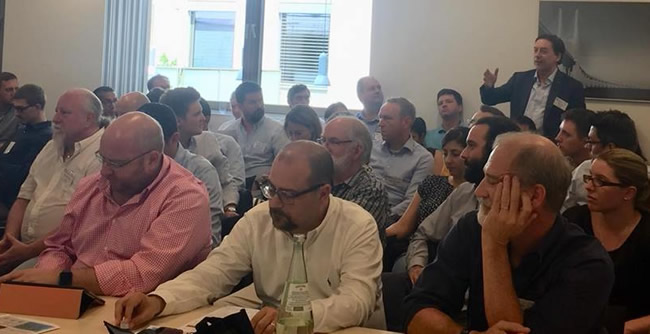
IGS TECHNICAL COMMITTEE WORKSHOPS IN MUNICH
By George Koerner – The IGS Technical Committees on Reinforcement (TC-R) chaired by Gerhard Bräu, and Barriers (TC-B), chaired by Kent von Maubeuge, organized the Hot Topics in Geosynthetic Workshops, on 4 – 7 June 2018 in Munich, Germany. The workshops were each divided into four half-day sessions. A breakdown of the sessions and highlights from the IGS Technical Committee Workshops follows.
GEOREINFORCEMENT WORKSHOP PROGRAM
4 June 2018
Welcome and Introduction | 08:30
Workshop Chair: Gerhard Bräu (Technical University Munich)
Morning Session | 08:30 – 12:30
“Facings of Walls and Steep Slopes”
Chair: Ian Fraser (United Kingdom), ianfraser@tcs-geotechnics.co.uk
- Richard Bathurst (RMC-Queen’s University) – Reinforcement loads and facing connection capacity in reinforced soil walls: Measured vs Predicted
- Lars Vollmert (BBG Bauberatung Geokunststoffe) – Stress conditions and connection requirements of reinforced soil block walls including the German EBGEO perspective
- Mike Dobie (Tensar International) – Incorporation of connection strength in design of reinforced soil block walls including seismic considerations
- Yassine Bennani Braouli (Terre Armee) – Facing and connection considerations for concrete panel wall systems
Afternoon Session | 13:30 – 17:30
“Use of Recycled and Amended Marginal Backfills in MSE and Reinforced Embankments/Slopes”
Chair: John Sankey (USA), jsankey@reinforcedearth.com
- John Sankey (Terre Armee) – Overview of Reinforced Structure Design, Applications and Uses with Recycled and Amended Backfill
- Chaido Doulala (Yuli) Rigby (Tensar) – Use of Polymeric Geogrids in Structures with Non-Standard Reinforced Fills
- Robert Lozano (The Reinforced Earth Company) – Treated Marginal Soils in MSE Structures
- Oliver Detert (Huesker) – Construction and Long Term Experiences with Marginal Fill in GRS Walls
- Castorina Silva Viera (University of Porto) – Use of Mixed Construction & Demolition Recycled Materials in Geosynthetic Reinforced Structures
5 June 2018
Morning Session | 08:30 – 12:30
“Design of Load-carrying MSE Bridge Abutments”
Chair: Jorge Zornberg (USA), zornberg@mail.utexas.edu
- Jorge G. Zornberg (The University of Texas at Austin) – Growing worldwide emphasis on load-carrying MSE bridge abutments
- Design of load-carrying geosynthetic reinforced soil abutments following US guidelines
- Dimiter Alexiew (Consultant Geosynthetics & Geotechnics) – Design of load-carrying MSE abutments following some of the European codes
- Andre Ferreira da Silva (Huesker) – Experience on load-carrying MSE abutments in South America
- Masayuki Koda (Railway Technical Research Institute) and Antoine Duttine (Integrated Geotechnology Institute) – Design of load-carrying MSE abutments following Japanese guidelines
- Nicolas Freitag (Terre Armee) – MSE bridge abutments: Only one part of a bridge system – examples with steel and geosynthetic reinforcement
Afternoon Session | 13:30 – 17:30
“Reinforced Veneer Stability”
Chair: Pietro Rimoldi (Italy), pietro.rimoldi@gmail.com
- George Koerner (Geosynthetic Institute) – General approach to veneer stability, testing and monitoring
- Jorge G. Zornberg (The University of Texas at Austin) – Selection of design alternatives for water and seismic actions on reinforced veneer stability
- Jay McKelvey (Earth Engineering Inc.) – Effects of equipment on veneer stability
- Pietro Rimoldi (Consultant) – Semi-probabilistic approach to veneer stability according to EuroCodes
- Felix Jacobs (IGB IngenieurgesellschaftmbH) – EBGEO approach to veneer stability
Summary and Closing | 17:30
Workshop Chair: Gerhard Bräu (Technical University Munich)
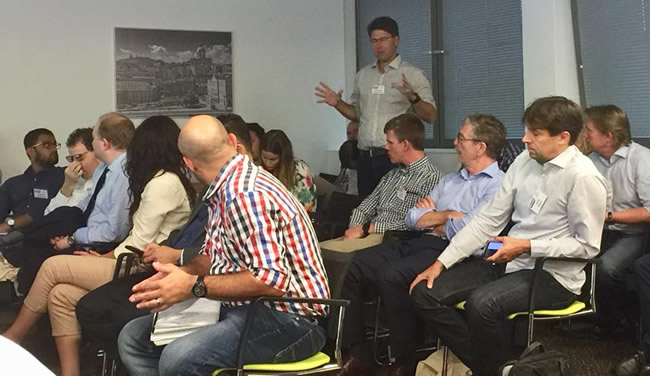
GEOBARRIER WORKSHOP PROGRAM
6 June 2018
Welcome and Introduction | 08:30
Workshop Chair: Kent von Maubeuge (NAUE GmbH & Co.KG)
Morning Session | 08:30 – 12:30
Geomembrane Durability
Chair: George Koerner (USA)
- Andreas Woehlecke (BAM) – Agency perspectives on geomembrane durability, service life and end of life
- Helmut Zanzinger (SKZ) – Autoclave exposure to accelerate incubation for Arrhenius modeling
- Sam Allen (TRI) – Exposed Multi-component (layered) geomembrane durability
- Kerry Rowe (Queen’s University) – Antioxidant depletion: Is higher HP-OIT the answer?
Afternoon Session | 13:30 – 17:30
“Geomembrane Protection”
Chair: Richard Brachman (Canada)
- Kerry Rowe (Queen’s U) – Why we need to limit long-term strains
- George Koerner – Preventing puncture: A US Approach
- Uli Sehrbrock: Limiting strain – The German Approach
- Richard Brachman (Queen’s U) – Why allowable strain depends on how its measured and calculated
7 June 2018
Morning Session | 08:30 – 12:30
“GCL Hydration and Controlling Factors”
Chair: Malek Bouazza (Australia)
- Malek Bouazza – Myths and facts about GCL hydration: what you need to know
- Kerry Rowe – How well do GCLs hydrate and self-heal: factors and effects
- Craig Benson – Hydration, Swelling, and Hydraulic Conductivity of Bentonite-Polymer Composite GCLs for Aggressive Leachates
- Gemmina Di Emidio – Wet and dry ageing of modified bentonites for GCLs under aggressive conditions
Afternoon Session | 13:30 – 17:30
“Standard Protocols for Construction/Installation Quality Assurance and Quality Control”
Chair: Boyd Ramsey (USA) and Kerry Rowe (Canada)
- Boyd Ramsey – Statistical likelihood of leakage with various levels of CQA and inspection surveys
- Sam Allen – Historical leakage rates with various levels of CQA and inspection survey(s): the benefits of advanced preparation
- Piet Meyer – Case histories of successful and unsuccessful inspection surveys and digital CQC data management
- Kerry Rowe – Field observation and implications for leakage
Summary and Closing | 17:30
Workshop Chair: Kent von Maubeuge (NAUE GmbH)
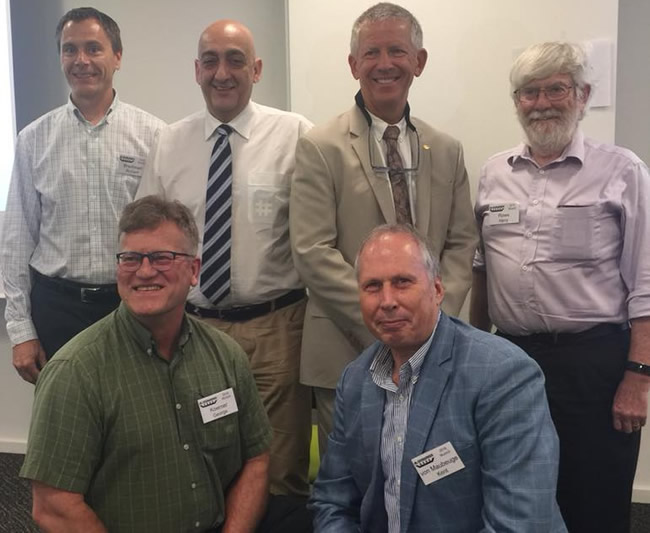
HIGHLIGHTS FROM THE IGS WORKSHOPS
The IGS welcomed over 100 civil and geotechnical engineering professionals from around the world to the TC-R workshop and about 70 to the TC-B workshop. This unique gathering combines high-level presentations from leading practitioners in the field with significant audience discussion time, enabling participants to share project experience, exchange technical concerns and solutions and network with colleagues who influence diverse applications (projects) containing geosynthetics.
GSI’s involvement over the four days was significant. George Koerner’s presentation on the “General approach to veneer stability, testing and monitoring,” was well received. It set the stage for the rest of the session and was broad reaching in scope. The presentation opened with a discussion of destabilizing and stabilizing forces related to veneer stability. It then turned to a review of the three major performance test results needed for veneer stability design. Namely: direct shear, wide-width tensile, and transmissivity. The presentation then covered monitoring of veneer slope and steep walls. A systematic approach to monitoring as well as the purpose for specific instrumentation was discussed. The relatively new technology of LIDAR particularly interested the audience. The presentation ended with several case histories and a discussion of EC-TRMs, geogrids, geocells and finally exposed anchored geosynthetic covers with absolutely no soil cover needed. There are certainly many new and exciting areas to pursue in this field.
GSI’s second task at the event was to chair the opening morning session of the TC-B workshop on durability. The agenda was stacked with heavy hitting presenters from Germany, USA, and Canada.
Mr. Woehlecke started us off with an overview of the German regulation for geosynthetic used in waste disposal. The BAM mandates that only a relatively thick 2.5mm HDPE be used in liner systems in Germany. The geomembrane is used in a single composite configuration and can only be made via the wide mouth die case process. It needs to be a monolithic layer of HDPE and cannot be a blended or layered material. The agency’s perspective on geomembrane durability, service life, and end of life is that all materials used in a lining system need to exhibit 100-year performance.
Helmut Zanzinger of SKZ was the next speaker in the session. He discussed an autoclave exposure technique to accelerate incubation for Arrhenius modeling. This work tied in nicely to the first presentation and answered the question of how the Germans verify 100-year performance of materials.
Sam Allen of TRI Environmental was next and threw the audience a major curve ball. He went against convention and discussed other materials than monolithic HDPE geomembranes. He delved into all kinds of issues (sampling, testing, seaming, etc.) with multi-component (layered) geomembrane durability. He left the session with the question: There are many different geomembrane formulations that exhibit fantastic physical, mechanical, hydraulic, and endurance properties: Why don’t designers consider broadening our options for containment?
Kerry Rowe of Queen’s University ended the presentation portion of the session with a discussion on antioxidant depletion. He challenged the validity of both the standard and high-pressure DSC tests by contrasting predicted performance with actual field verifications. Much of his findings showed that performance is application specific where extreme environmental conditions will challenge commodity materials but can be managed by high performance geomembranes.
With the conclusion of the presentation phase of the session the discussion began. In true workshop fashion we opened the floor to 90 minutes of exchange. The Q&A’s were fast and furious. Some of the better examples are listed below:
- Should we restrict the co-monomer used in the manufacturer of HDPE (oxtane, heptane, butane etc.)?
- What are the risks if a geomembrane fails?
- Should we insist that the geomembrane exhibit isotropic behavior?
- Should we be making application-specific materials (i.e. covers/liners, landfills, brine ponds, high chlorine)?
- Do all geomembranes pass a TCLP test?
- Can someone explain how the AO package diffuses throughout the polymer cross section of a geomembrane with time?
- How do geomembrane seams age? Are they as durable as the parent material?
- What is the durability of textured versus smooth geomembrane?
- What is the effect on durability of calcium carbonate or talc in the geomembrane formulation?
In all, the session was exciting and fun. The audience was great and energized the panel to stretch and give many suggestions for going forward and improving geomembranes.
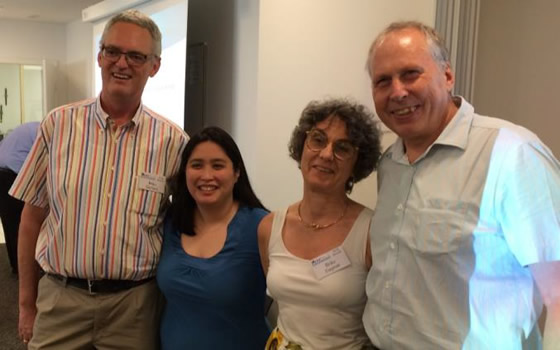
Our last task at the workshop was a presentation on the USA Approach to preventing geomembrane puncture. The presentation was given in the afternoon of the first day of the TC-B session on Geomembrane Protection, which was chaired by Richard Brachman.
The presentation explored the origins of index puncture testing in the USA. We discussed FTM 101C 2056 and three other ASTM Index puncture tests. It was pointed out that in all four cases the output was puncture strength where puncture toughness was probably a better indicator of performance. The presentation then went on explore the need for good puncture protection and then discussed ASTM D5514. A performance puncture test which was used for a 10 year study at the institute. We investigated the objective, benefits and finding of the study and contrasted this approach to the limiting long-term strain efforts that were circulating in the room. The results of our study were then validated with several actual case histories from field exhumed sites that had be functional well for 25 years. The presentation ended with the statement that “Good Geomembrane Performance requires a Systems Approach” which is outlined as follows:
- Good design by Professional Engineer
- Quality materials: i.e. GRI GM13 HDPE
- Accredited testing: i.e. CE mark, GAI-LAP
- Best Available Installation: IAGI-CWT
- Quality Assurance: GCI-ICP
- LIS prior to commissioning facility
- Careful operations and maintenance
If one follows this approach one can expect to experience secondary flows in the LCRS like that in NY state. They have 27 double lined composite system landfills that have experienced the following performance as of 2018, (Ave 0.7 lphd, min 0.05 lphd and max 2.6 lphd).
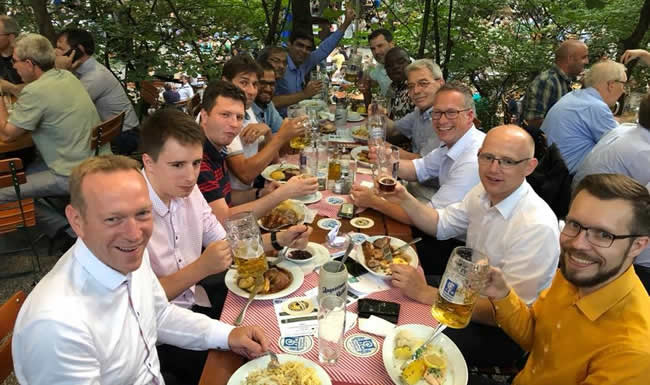
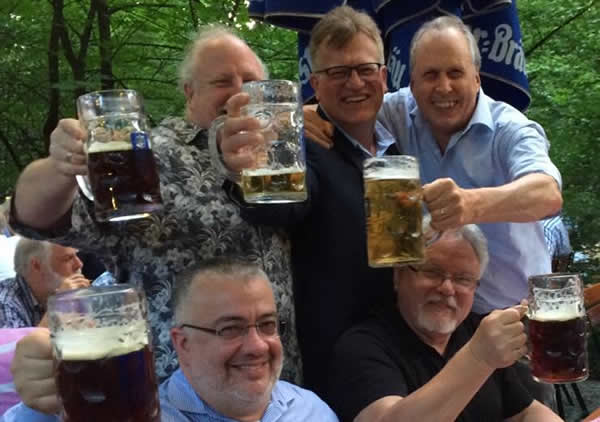
George R. Koerner
Director of the Geosynthetic Institute
http://www.geosynthetic-institute.org











